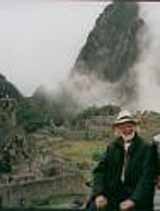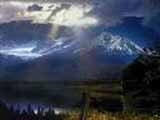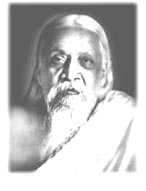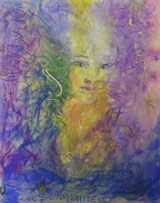Alchemy of the soul
The encounter of psychology and spirituality
Editor's note
This begins a series of chapter of Arya Maloney's book on 'Alchemy of the soul' which in a very living manner takes us through illness, past life experiences, revelatory dreams, to the different levels of our being and the thread that connects them. We hope you will enjoy this journey with the author.
Introduction
Evolution in the field of psychology is radically altering the boundaries between psychology and spirituality. Psychology traditionally focuses on strengthening the ego. Spirituality, on the other hand, focuses on a Reality beyond the ego. States of higher consciousness emerge in which the personality dissolves and unity is experienced. As a therapist, I am witnessing a phenomenon: the once-separate domains of psychology and spirituality are interconnecting, creating a new paradigm of the human psyche. The origin of this evolution can be traced to the 1960's - to the advent of transpersonal psychology. While it incorporated the exploration of traditional psychology into the psyche, it also boldly opened the door to the soul. The effects of this pioneering is being experienced today by both clients and therapists.
We stand now on the threshold of an evolving psychology. Transpersonal psychology has ventured beyond the borders of psycho-analysis, behaviorism and humanistic psychology into the domain of the sacred - Yoga, Buddhism, Taoism, Christianity.
"What truly defines the transpersonal orientation is a model of the human psyche that recognizes the importance of the spiritual or cosmic dimensions and the potential for consciousness evolution" (1).
Focus on higher states of consciousness stands in sharp contrast to the preoccupation of psychoanalysis and behaviorism with deficits and distortions in the human psyche. Though humanistic psychology has moved towards growth and self-actualization, many within this movement have begun to recognize its limits. Slowly, mystical experiences, transcendence, ecstasy and cosmic consciousness have entered the realm of psychology, opening the way to transpersonal psychology. Acknowledging transcendental needs and spirituality as intrinsic aspects of human nature, it emerged as a fourth force.
Transpersonal psychologists have become guides who can help build bridges between personality and spirit. These guides must recognize the devastation that often occurs when the soul manifests in an ego-centered world. They must use skillful means to guide travelers through their dark night without short-circuiting their experience by hospitalization or drugs. The depth of their own personal experience must enable them to discriminate between a psychotic and a soul experience. Near-death journeys, past life memories, states of possession, unitive consciousness, shamanic states and awakening of the kundalini and transpersonal states which can be misdiagnosed as psychotic episodes. Keenly aware of this danger, the transpersonal psychotherapist strives to guide the voyager through the narrow straits of personality into the wider realm of consciousness.
Ken Wilber, leading theoretician of transpersonal psychology, suggests that this new breed of guide, or 'spiritual therapist', resembles the General Practitioner (GP) in Western medicine. This GP of the spirit
"...should have at least a theoretical familiarity with all levels of the spectrum of consciousness - matter, body, mind (magic, mythic, rational, and integral-aperspectival), soul (psychic and subtle), and spirit (causal and nondual). They should be familiar with the types of pathologies that occur at each of these levels. They should be trained in the general lower techniques of bodily focusing and mental interpretation. They should know how to deal with persona, shadow and ego problems. And they should themselves have a specific higher or contemplative practice" (2).
Though not expected to personally practice all therapies, Wilber envisions the transpersonal therapist as having the following primary responsibilities:
1. To practice general psychotherapy and transpersonal therapy with the client.
2. To recommend specialists, if needed.
3. To help coordinate the client's tools of transformation.
Wilber's criteria for a spiritual therapist still remains largely unrealized because the training is lengthy. Therapists cannot learn solely through academic exploration or specialized training. They must weave the threads of personality and spirit in their own lives by working towards direct knowledge of unity consciousness. Only regular, constant spiritual practice can open this door. Spiritual states manifest not only in the zendo and the ashram, but also in the therapist's office. The practitioner's breadth of vision, experience of transpersonal states, and discrimination can make the difference between a client entering a hospital or embracing his own spirituality.
Extensive mapping of states of consciousness, as well as creation of inner technologies to access these states, have already been realized in the short life of transpersonal psychology. Therapists continue to expand this psychology by employing existing modalists, even as they create new ones. Shifting the focus from viewing human nature through the lens of pathology to envisioning it as a laboratory for the evolution of consciousness demands an emphasis on process rather than product. Transpersonal psychology exists as an open model, not a closed system. Research into the evolution of consciousness will continue to unfold as both client and therapist continue to uncover basic organic truths.
A new paradigm of the human psyche
The Integral Yoga of Sri Aurobindo and the Mother is the ground on which I stand as a transpersonal therapist. While it is not possible hereto fully investigate their vision, I will focus on their psychospiritual paradigm - a paradigm of evolutionary consciousness. This model of the human psyche can be more easily understood within the context of their personal history.
Sri Aurobindo was born on August 15, 1872, in Calcutta, India. His father, an anglicized Indian doctor prejudiced against Indian culture, decided to send his children to study in Engalnd. From age seven to twenty Sri Aurobindo studied at St Paul's School and Cambridge University. During those thirteen years he received thorough grounding in Western literature and civilization, and was recognized as a brilliant scholar of Greek and Latin, as well as an accomplished poet. Returning to India in 1893, he taught at Baroda College, then became leader of an extremist party striving to drive the British out of India. Through his revolutionary writing and speaking, he gained notoriety as 'the most dangerous man in India'. Arrested for conspiracy in May, 1908, he spent a year in prison. Though the British Government tried to convict him, he was acquitted and released in May 1909. His political activism continued, as did police harassment. Then, suddenly, he received an inner command - to go to Chandernagore and then to the French Province of Pondicherry. He arrived there on April 4, 1910. This marked his withdrawal from political life. His work of transformation of human nature had begun.
Sri Aurobindo received two major spiritual realizations during his public life - the experience of nirvaana (the transcendent reality beyond name and form), and the experience of cosmic consciousness (the immanent Divine living in all forms). These experiences, normally the goal of many spiritual paths, became the springboard for a new state of consciousness which not only sought liberation and unity, but the manifestation of liberation and unity on the earth and in the physical body. This state, which he calls the supramental consciousness, is the next evolutionary state, a stage in which beings will possess a divine knowledge and power capable of transforming matter.
For the next forty years, Sri Aurobindo carried on this work with his spiritual partner, the Mother.
Mother was born in Paris on February 21, 1878, as Mirra Alfassa. Her spiritual life began at age five when she became aware of a deep and profound mission. Between the ages of eleven and thirteen a series of psychic and spiritual experiences revealed her future spiritual work with Sri Aurobindo. Ten years before meeting him physically, she contacted him in dreams.
Gifted in mathematics, music and painting, Mirra befriended many of the great, contemporary artists - Moreau, Rodin, Monet, before meeting Sri Aurobindo. She also studied occultism in Algeria with a Polish adept named Theon and his French wife, Alma. This study of the supra-physical planes of consciousness became the basis of a greater spiritual ideal - to bring the Divine consciousness into matter. In 1914, Mirra visited Pondicherry with her husband, Paul Richard. She met Sri Aurobindo and instantly recognized him as the person of her dreams. Fully aware that her work was with him, she returned to Pondicherry on April 24, 1920 to begin their collaboration. After Sri Aurobindo's death in 1950, she continued their study of the 'yoga of the cells' - a yoga leading to the total transformation of the body.
These spiritual explorations have given us a new paradigm for a greater psychology: this paradigm extends the egocentric focus of modern depth psychology while offering an alternative to worldorbody-negating spiritualities. Sri Aurobindo turned to yoga in the midst of his revolutionary thrust to free India from British rule. Intuitively, he perceived the need for a greater knowledge and power, not to transcend the world, but to transform it. Even as they developed their Integral Yoga, both explorers maintained this earth-centered focus.
"I am concerned with the earth, not with worlds beyond for their own sake; it is a terrestrial realisation that I seek and not a flight to distant summits" (3).
"The goal is not to lose oneself in the Divine Consciousness. The goal is to let the Divine Consciousness penetrate into Matter and transform it" (4).
This 'terrestrial realisation', this transformation of matter, gave rise to an evolutionary spirituality. Traditional yogas concentrated on unraveling the cords that bind soul and personality, ultimately releasing the former from life in this world. In Integral Yoga the human being is not the final rung in the evolutionary ladder, s/he is transitional. Just as the animal was the laboratory for the emergence of the human, so too humankind is the laboratory for the emergence of the supramental species. The realization of this vision necessitates a descending as well as an ascending path:
"When you follow the ascending path, the work is relatively easy. I had already covered this path by the beginning of the century and had established a constant relationship with the Supreme - That which is beyond the Personal and the gods and all the outward expressions of the Divine, but also beyond the Absolute Impersonal...And this is what must be brought down into Matter. Such is the descending path, ....and there, the work is immense" (5).
The descending path of this new yoga is seemingly impossible, for here we confront human nature, universal nature, the body. The vast majority of spiritual seekers have considered the body to be unchangeable, an obstacle to spiritual realization. However, in Sri Aurobindo's and Mother's yoga, the descending path brings Divine consciousness into the body, as well as into the personality. Manifestation of spirit in the psychotherapeutic process integrates states of consciousness as diverse as trauma and mysticism. (We will explore practical applications in chapter 3 A Soul-centered psychology). Individuality and individuation do not disappear. Spiritual realization (synonymous in the past with discarding the personality) does not discard psychology. Instead, it broadens in an ego-centered individuality. Sri Aurobindo and the Mother have given us a new paradigm for a greater psychology, a soul-centered individuality - the next step in the science of psychology and in evolution.
Here now we touch at last upon that layer of evolution that Sri Aurobindo calls 'psychic transformation', wherein the soul replaces the ego as the center of the being. What then can we learn about the effects of soul on personality? Can the work of transpersonal psychotherapists further the manifestation of soul in the mind, as well as in the body and the emotions? As a transpersonal therapist, I am witness to the influx of soul and its vital effects on the personality. The case studies that follow are illustrations of this interface.
An Integral approach to healing
The Integral Yoga of Sri Aurobindo and the Mother, the basis of my work, is supported and complimented by the process-oriented psychology of Arnold Mindell; the holotropic breathwork of Stanislav and Christina Grof; and the process acupressure modality of Aminah Raheem. All of these therapeutic modalities recognize transpersonal states of consciousness and utilize the physical body as a vehicle for accessing psycho-spiritual phenomena. Transpersonal practioners Mindell, Grof and Raheem are deeply grounded in clinical psychology (abnormal states of consciousness), knowledge of Buddhism, Taoism, Hinduism, Christianity and spiritual practice. All are expert in discriminating between spiritual and psychotic experience. All are prototypes of the transpersonal therapist. They offer an integral approach to healing that fully utilizes the body, life-force, mind and spirit. This integration aligns their psychology with the evolutionary psychology of Sri Aurobindo and the Mother.
Trained as a physicist and a Jungian analyst, Arnold Mindell studied the body's signals in both himself and in his clients. He discovered that a dream could be released to waking consciousness by amplifying an unconscious movement, sound or glance, by exploring a physical symptom or feeling. The dream process then emerged as a phenomenon occurring in waking states, as well as sleeping ones. The body, Mindell discovered, dreams when awake.
He likened this discovery to the philosophy of Taoism. Like the work of following the Tao, following one's own psychological process, results in the manifestation of myriad forms. It cannot however, be defined by any of them:
"The Tao that can be named is not the Great Tao" (Lao Tzu).
By following our process, by following the Tao of our inner and outer world, we become more conscious of our personal history and of our transpersonal nature.
Unconsciously produced by the body, it facilitates the process of individuation by leading beyond the dualistic world of self and others. This movement from ego to Self, re-centers the Self, replacing it as the true center of being. Mindell has created a transpersonal psychology which integrates mind, body and spirit.
Stanislav Grof, also a pioneer in the field of transpersonal psychology, has focused on using breath to reveal both psychological blocks and transpersonal states. His therapeutic modality, Holotropic Integration, is a further component of my work. Trained as a psychoanalyst in Czechoslovakia, Grof studied the then newly synthesized psy-chedelic, LSD - a drug simulating abnormal mind states. Questioning the slow and often unsuccessful process of psychoanalysis, he ingested the drug, hoping to induce these states. His experience catapulted him into the arena of transpersonal psychology, and he soon received an offer to conduct research at a hospital in Baltimore, Maryland. After thousands of psychotherapeutic sessions in which psychedelic substances were used, Grof found that his clients' experiences fell into one or more levels of consciousness: Sensory - expansion of sensory experience; Perinatal - experiences of birth and death; Personal history - experiences revealing childhood memories of trauma; Transpersonal - experiences of states of super-consciousness, i.e., ascent and descent of kundalini, non-dualistic states, past-life memories.
When the United States forbade researches to use psychedelic substances, Grof and his wife, Christina, created Holotropic Integration. This technique, employing rapid breathing (hyperventilation), and loud, evocative music, produced altered states of consciousness similar to those induced by psychedelics. Like process-oriented psychology, holotropic breathwork is an integrative therapy involving body, mind, emotions and spirit. It is still another modality which can address the limits of personality, as well as the limitlessness of that which is beyond personality.
Aminah Raheem, an associate of Arnold Mindell and an innovator in the field of transpersonal psychology, combined classical acupressure with process-oriented psychology in order to create Transpersonal Integration. Though many practitioners of acupressure and acupuncture are aware of strong psychological and spiritual reactions in their clients, they have not been trained to work consciously with this psycho-spiritual process. Combining her experience with Mindell and her training in Jin Shin Jyutsu, she brought acupressure into the field of psychology. She began to follow the client's psycho-spiritual process while opening the energy of the body through acupressure.
Process acupressure works at the interface between personality and soul. Depending on the stage of the client's process, the work focuses either on personality or on soul issues. Recognizing that the body contains one's complete personal history, Raheem adds bodywork to personal and transpersonal psychology, discovering that personal and soul psychology can be accessed through the body's energy points.
A Fourth Force
The soul-centered psychology offered here forges beyond the preoccupation of psychology with mind, emotions and body to a fourth force. With the advent of relativity and quantum theory, we no longer live in a three dimensional world. The discovery of a space-time continuum has emerged. From the world of the new physics to the world of spiritual consciousness, reality is experienced as an interrelated whole - as the fourth dimension. Transpersonal psychology, which adds study of the soul to study of mind, emotions and body has become the fourth force, the next evolutionary step in the field of psychology.
This book is an offering to the ongoing research of transpersonal psychology which unites both theory and practice. A soul-centered individuality forms the basis for a longer vista of psycho-spiritual growth; one which includes all aspects of the ego-centered paradigms of modern depth psychology, while opening the way to a higher consciousness. In my experience, the evolutionary paradigm of Sri Aurobindo and the Mother, coupled with transpersonal approaches of Mindell, Grof and Raheem, have provided a full spectrum psychotherapy capable of integrating body, emotions, mind, soul and spirit.
In part 1, I will formulate a soul-centered psychology that pays special attention to the need for bridges between psychotherapy and spiritual practice. Part II will contain the stories of four of my clients. It will illustrate the use of transpersonal psychotherapy in addressing varying life situations. Part III will be a compilation of practices for the integration of body and soul.
(To be continued)
References1. Grof. Stanislav. Beyond the Brain. Albany; State University of New York, 1985, p. 197.
2. Wilber. Ken. One Taste. Boston; Shambhala, 2000, p. 119.
3. Sri Aurobindo. On Himself. Pondicherry; Sri Aurobindo Ashram Trust, 1972, p. 124.
4. The Mother. Collected works of the Mother, Vol. 15. Pondicherry; Sri Aurobindo Ashram Trust, 1980, p. 91.
5. The Mother. Agenda, Vol 1. Mysore; Mira Aditi Centre, 1979, p. 300.
Dr. Arya Maloney is the cofounder of the Mindbody Centre in Kingstom, New York and holds three graduate degrees in chemistry, theology and psychology. He has been teaching in colleges and universities.
Share with us (Comments, contributions, opinions)
When reproducing this feature, please credit NAMAH, and give the byline. Please send us cuttings.









